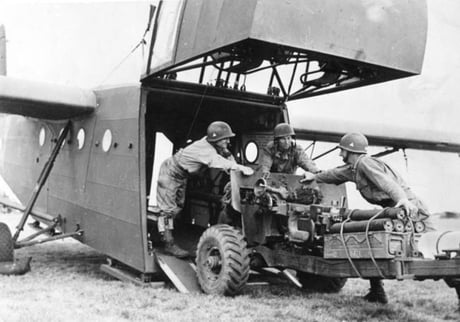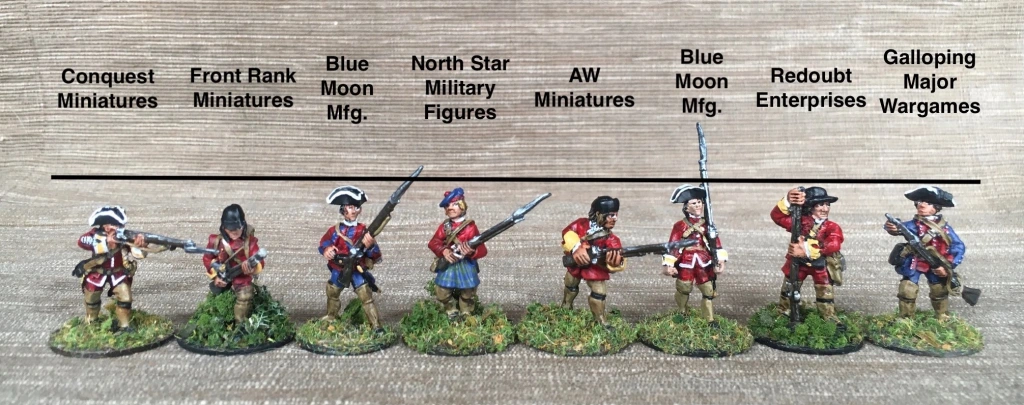In continuing to build out my collection of British Redcoats for the French and Indian War, I’ve turned to Blue Moon Manufacturing — an old standard in wargaming miniatures.

Blue Moon produces a tight selection of metal 28mm figures in a line called “Drums In The Ohio Valley.” I picked up a box of 30 marching British which includes two commanders, two NCOs, four flag bearers, two drummers and 20 soldiers marching at shoulder arms. The officers all come resting with pole arms, something commonly found in FIW miniatures but little seen in the wooded areas of battle of the period. Four flag bearers were twice as many as I needed and the drummers are nice to have but not necessary at the skirmish scale and rulesets I play. I set these figures aside for another day and turned to the many body of troops.
 Blue Moon British stand ready to receive paint
Blue Moon British stand ready to receive paint
Since these models are going to be sharing the table with my other British from Conquest Miniatures sold by Warlord Games, I made some immediate comparisons in casting and scales. The Conquest figures tend to be a bit thin and lean toward 25mm. The chunkier Blue Moon miniatures are a full 28mm and more heroic in scale. My Virginia Provincials from Galloping Major scale more equally with these Blue Moon models.

Thick base (right) filed to a thinner height (left)
A main factor in driving the size differential among manufacturers is that the Blue Moon British stand overly tall on thick bases. I had been forewarned of this but I was pretty surprised at how this little extra amount of metal made the size noticeably different. With some tedious cutting and filing, I brought them down a bit in height to be a bit more in line with the height of the Conquest models.

Brass rod inserted as a flag pole
The flag bearers also required some small brass rod to be cut and inserted through holes I drilled through their hands. This gave me the excuse to acquire a pin vise drill, a long overdue addition to my hobby kit. In all, there was a lot of prep work on the Blue Moon figures before I could start any painting.

My painting area swarming with British being prepped for painting
The Blue Moon line of figures fits exactly with my focus for the war. I’m painting all my British soldiers of the period to represent the 44th Regiment of Foot mostly for their presence in the Ohio Country, specifically in the Braddock Expedition and the Battle of the Monongahela.

Based and ready for priming
After basing the models on washers, filling the bases with rough wood filler and spraying a black primer coat, I blocked in the colors. I didn’t get carried away on exact colors, relying on a basic red for the coats, waistcoats and pants, basic yellow for the facings and a brown buff for the leggings.

Coats and leggings blocked in starting on hat trim

Details begun on the lapels, turn backs and cuffs
The cuffs were done in two steps, first with a thick bright white stripe and then finished with a thin line of yellow. With a fine brush, white details were added on the basic black tricorn hats and on trim to the waistcoats and lapels.

Equipment straps and white uniform detail progressing

Most colors blocked in and just needing some final details, clean-up and shading
Details were finished off with the same brown buff on stripes and belts, a basic brown to the guns and metal to finish off the guns, bayonets and officer swords. Finally, flesh and eyes were painted. Exposed skin and the leather leggings and straps got a careful light coat of brown wash to finish the painting. I had leftover flag photocopies from my previous British so my standards would all blend together nicely. Finally, the bases were covered with my favorite groundcover – Green Adirondack from Scenic Express.















































 Blue Moon British stand ready to receive paint
Blue Moon British stand ready to receive paint






















